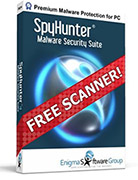Advanced System Protector is a malware virus. This is a direct clone of several other viruses out there. The purpose of this malware virus is to trick the user into thinking they have a virus then tell them they need to purchase Advanced System Protector in order to remove the viruses found. This is all a scam. The real virus is Advanced System Protector.
Manual Removal of Advanced System Protector is not recommended because it’s too easy to remove core system files and make a mistake that can damage your computer. The best thing to do is to use an antivirus program and run a full scan.
What Damage Is Being Done by Advanced System Protector?
This virus will block most programs from running and installing on your computer. It will show false error messages and virus warnings that are not real. If you wish to use an antivirus client you will have to download it then boot into safe mode with networking to install and update. Then you can run a full scan and easily remove this virus.
Automatic Virus Removal
 SpyHunter is very user friendly, providing you with a simple interface that will allow you to properly understand the options and functions available. SpyHunter succeeds at both cleaning your already infected computer from viruses and to prevent virus infections in the future. Simply put IT WORKS!
SpyHunter is very user friendly, providing you with a simple interface that will allow you to properly understand the options and functions available. SpyHunter succeeds at both cleaning your already infected computer from viruses and to prevent virus infections in the future. Simply put IT WORKS!
Online Virus Removal Service
 Do you need Expert Help! PCNinja.com has experts standing by that can fully remove this virus from your computer. Based in the U.S.all repairs are down by certified computer repair experts. They have fixed thousands of computers over the years and RemoveVirus.org is proud to recommend this U.S. based company to service your computer. Visit http://www.pcninja.com or call 1-888-392-2785
Do you need Expert Help! PCNinja.com has experts standing by that can fully remove this virus from your computer. Based in the U.S.all repairs are down by certified computer repair experts. They have fixed thousands of computers over the years and RemoveVirus.org is proud to recommend this U.S. based company to service your computer. Visit http://www.pcninja.com or call 1-888-392-2785
8am-10pm PST
Advanced System Protector Manual Removal Procedures
Manual removal is not recomended for normal computer users.
First we need to find and terminate the main executable.
- [random].exec ( Example is 6KJF55K4.EXE ) Your file trace will be named different.
Some Tips on Locating the file.
Known File Paths. To view these file paths you will need to either manually type them in or show hidden files and folders. Learn how to at
- C:\Documents and Settings\USER NAME\Local Settings\Application Data
Windows Vista/ Windows 7/ Windows 8:
- C:\ProgramData\
- C:\Users\Your Uer Name\AppData\
- C:\Users\Your Uer Name\AppData\local
- C:\Users\Your Uer Name\AppData\Roaming
A. To find the file name we recommend you run a free scan using SpyHunter. The free scan will show you the exact file name and full path of the executable that you need to delete. This is the easiest way to locate it.
B. Browse to the file location shown above. Sort the files by date and see if any of the file names match the date you where infected. Only a few files should be around the same date of the infection. From there you can re-name the file you believe is the virus and restart your computer. Once you have re-booted you can now delete that file.
While you may not know the exact name of the file here are a few tips to locate it.
C: Log-into another users account and see if you can delete the file. Again use the File Locations below to locate the file
D: Start the Task Manager the very second you login and terminate the process that way.
Once you have been able to remove the main executable your computer will run as normal. If you have not purchased an antivirus client for your computer you should consider doing so. This will prevent you from being infected again. If you need advanced help we do recomend PCNinja.com or you can always just ask your questions below.

If you have Norton Security 2114, select scan, choose custom scan, browse application , select and Norton will detect it as a problem and quarantine program.
Thanks for letting others know Norton got the job done for you.
I have AVG and ran a full scan and it didn’t detect Advance System Protector. What should I do?